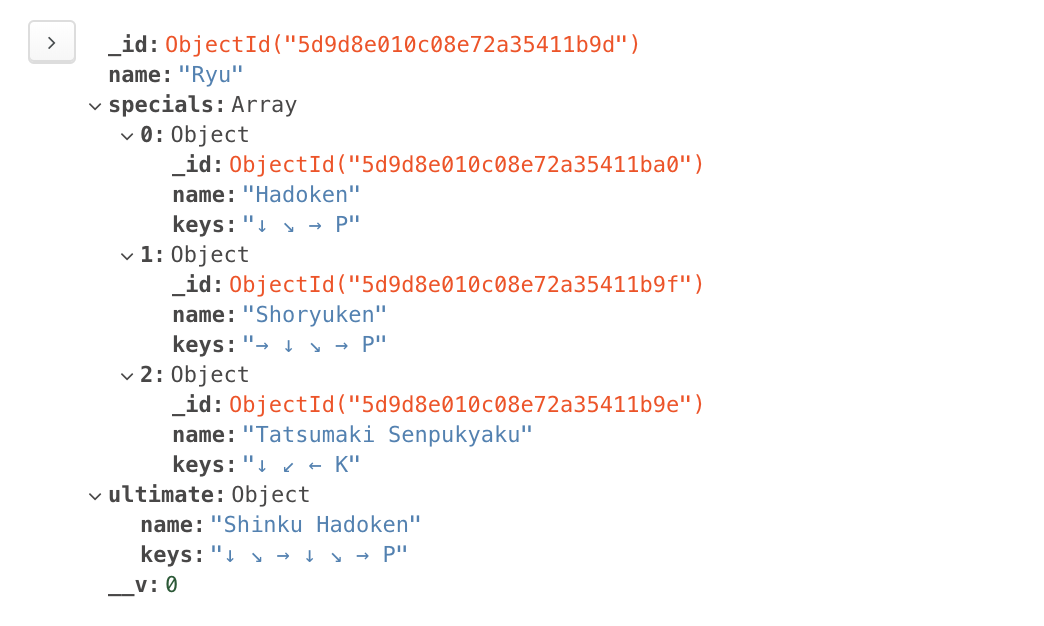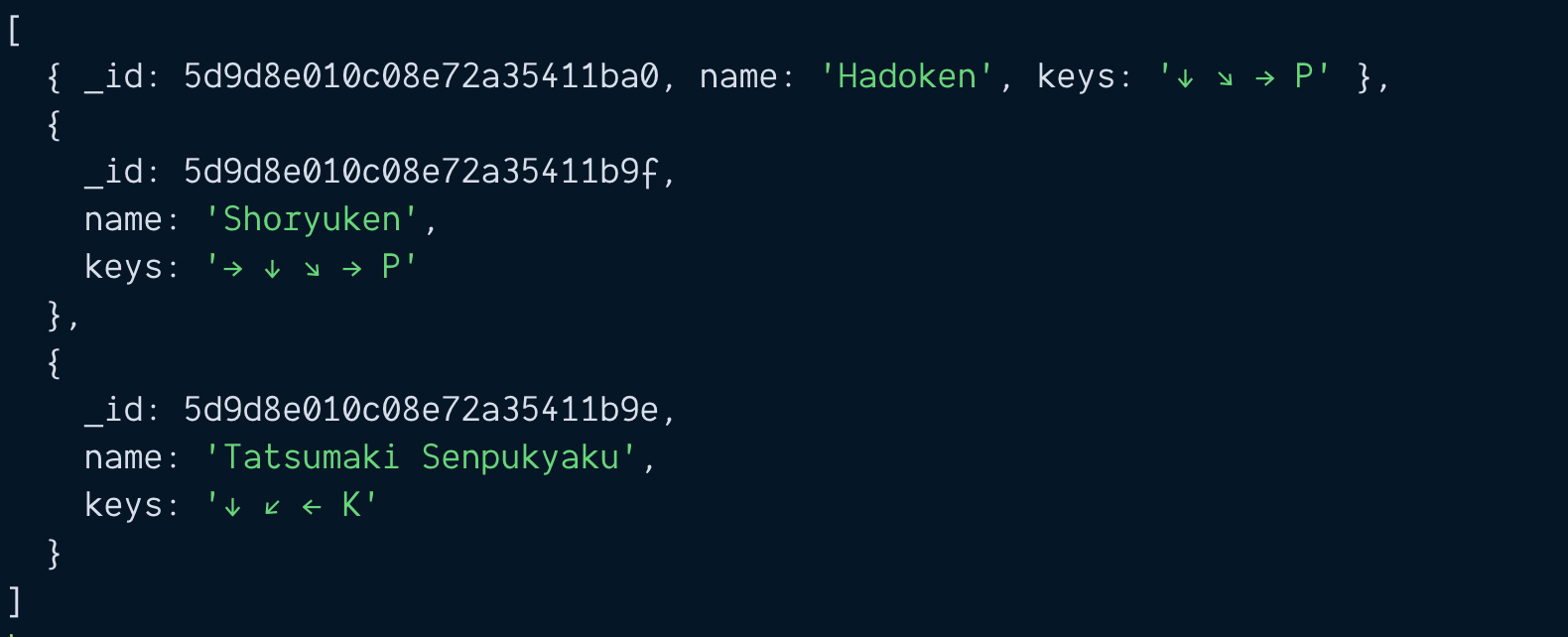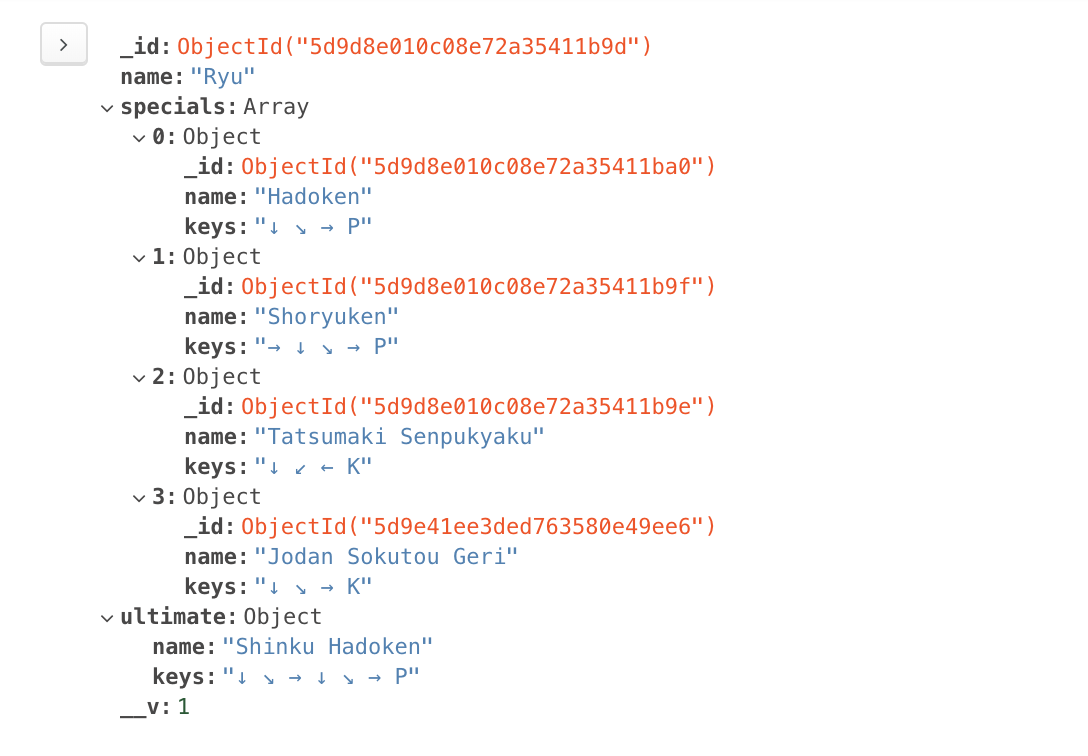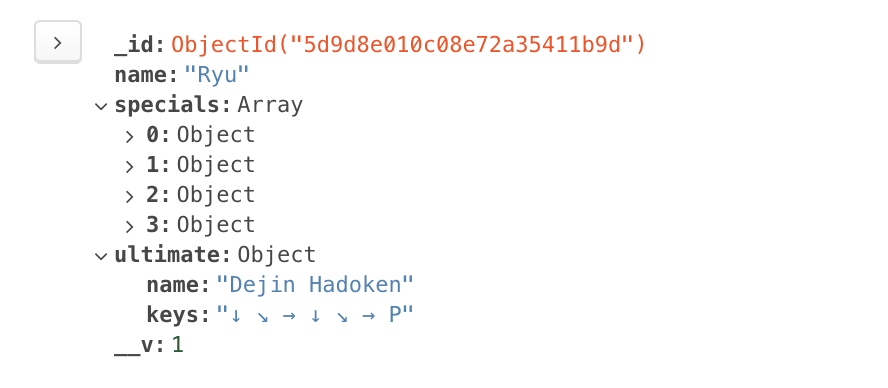How To Update Child Schema In Moongoose And Save Parent Schema
Mongoose 101: Working with subdocuments
18th Dec 2019You learned how to use Mongoose on a basic level to create, read, update, and delete documents in the previous tutorial. In this tutorial, we'll go a pace further into subdocuments
What'southward a subdocument
In Mongoose, subdocuments are documents that are nested in other documents. You can spot a subdocument when a schema is nested in another schema.
Annotation: MongoDB calls subdocuments embedded documents.
const childSchema = new Schema({ proper name: String }); const parentSchema = new Schema({ // Single subdocument kid: childSchema, // Array of subdocuments children: [ childSchema ] }); In practice, you don't have to create a split up childSchema like the example above. Mongoose helps you create nested schemas when you nest an object in some other object.
// This code is the aforementioned as above const parentSchema = new Schema({ // Single subdocument child: { name: String }, // Array of subdocuments children: [{name: String }] }); Updating characterSchema
Permit'due south say we desire to create a character called Ryu. Ryu has three special moves.
- Hadoken
- Shinryuken
- Tatsumaki Senpukyaku
Ryu besides has one ultimate move called:
- Shinku Hadoken
We want to save the names of each movement. Nosotros also want to save the keys required to execute that move.
Here, each motion is a subdocument.
const characterSchema = new Schema({ name: { blazon: String, unique: true }, // Array of subdocuments specials: [{ name: String, keys: Cord }] // Single subdocument ultimate: { proper noun: String, keys: String } }) You tin can also use the childSchema syntax if y'all wish to. It makes the Graphic symbol schema easier to sympathize.
const moveSchema = new Schema({ proper name: String, keys: String }) const characterSchema = new Schema({ proper noun: { type: Cord, unique: true }, // Array of subdocuments specials: [moveSchema], // Single subdocument ultimate: moveSchema }) Creating documents that contain subdocuments
In that location are two means to create documents that contain subdocuments:
- Laissez passer a nested object into
new Model - Add properties into the created document.
Method 1: Passing the entire object
For this method, we construct a nested object that contains both Ryu's name and his moves.
const ryu = { name: 'Ryu', specials: [{ proper name: 'Hadoken', keys: '↓ ↘ → P' }, { name: 'Shoryuken', keys: '→ ↓ ↘ → P' }, { name: 'Tatsumaki Senpukyaku', keys: '↓ ↙ ← Grand' }], ultimate: { proper name: 'Shinku Hadoken', keys: '↓ ↘ → ↓ ↘ → P' } } Then, we pass this object into new Character.
const char = new Character(ryu) const dr. = await char.salvage() console.log(doc) 
Method 2: Adding subdocuments afterward
For this method, we create a grapheme with new Character get-go.
const ryu = new Character({ proper name: 'Ryu' }) Then, nosotros edit the graphic symbol to add special moves:
const ryu = new Character({ name: 'Ryu' }) const ryu.specials = [{ proper name: 'Hadoken', keys: '↓ ↘ → P' }, { proper name: 'Shoryuken', keys: '→ ↓ ↘ → P' }, { name: 'Tatsumaki Senpukyaku', keys: '↓ ↙ ← Thousand' }] Then, we edit the character to add the ultimate move:
const ryu = new Grapheme({ name: 'Ryu' }) // Adds specials const ryu.specials = [{ name: 'Hadoken', keys: '↓ ↘ → P' }, { proper noun: 'Shoryuken', keys: '→ ↓ ↘ → P' }, { name: 'Tatsumaki Senpukyaku', keys: '↓ ↙ ← K' }] // Adds ultimate ryu.ultimate = { proper name: 'Shinku Hadoken', keys: '↓ ↘ → ↓ ↘ → P' } Once we're satisfied with ryu, we run salvage.
const ryu = new Character({ name: 'Ryu' }) // Adds specials const ryu.specials = [{ name: 'Hadoken', keys: '↓ ↘ → P' }, { name: 'Shoryuken', keys: '→ ↓ ↘ → P' }, { proper name: 'Tatsumaki Senpukyaku', keys: '↓ ↙ ← K' }] // Adds ultimate ryu.ultimate = { name: 'Shinku Hadoken', keys: '↓ ↘ → ↓ ↘ → P' } const doc = await ryu.salve() panel.log(doc) 
Updating assortment subdocuments
The easiest way to update subdocuments is:
- Use
findOneto find the document - Get the array
- Change the assortment
- Run
save
For example, let's say we want to add Jodan Sokutou Geri to Ryu'southward special moves. The keys for Jodan Sokutou Geri are ↓ ↘ → K.
Kickoff, we detect Ryu with findOne.
const ryu = expect Characters.findOne({ name: 'Ryu' }) Mongoose documents behave similar regular JavaScript objects. We tin get the specials array by writing ryu.specials.
const ryu = wait Characters.findOne({ name: 'Ryu' }) const specials = ryu.specials console.log(specials) 
This specials array is a normal JavaScript array.
const ryu = expect Characters.findOne({ name: 'Ryu' }) const specials = ryu.specials console.log(Array.isArray(specials)) // true We can utilize the push method to add a new item into specials,
const ryu = await Characters.findOne({ proper noun: 'Ryu' }) ryu.specials.push({ name: 'Jodan Sokutou Geri', keys: '↓ ↘ → K' }) After updating specials, nosotros run save to save Ryu to the database.
const ryu = await Characters.findOne({ name: 'Ryu' }) ryu.specials.push({ name: 'Jodan Sokutou Geri', keys: '↓ ↘ → K' }) const updated = expect ryu.save() console.log(updated) 
Updating a single subdocument
It's even easier to update single subdocuments. You can edit the certificate directly like a normal object.
Let'southward say nosotros desire to modify Ryu's ultimate name from Shinku Hadoken to Dejin Hadoken. What nosotros practise is:
- Apply
findOneto get Ryu. - Change the
proper nouninultimate - Run
save
const ryu = await Characters.findOne({ name: 'Ryu' }) ryu.ultimate.proper name = 'Dejin Hadoken' const updated = await ryu.save() console.log(updated) 
If you enjoyed this article, please back up me by sharing this article Twitter or buying me a java 😉. If y'all spot a typo, I'd capeesh if you tin can correct information technology on GitHub. Give thanks you lot!
How To Update Child Schema In Moongoose And Save Parent Schema,
Source: https://zellwk.com/blog/mongoose-subdocuments/
Posted by: nelsonvoked1938.blogspot.com


0 Response to "How To Update Child Schema In Moongoose And Save Parent Schema"
Post a Comment